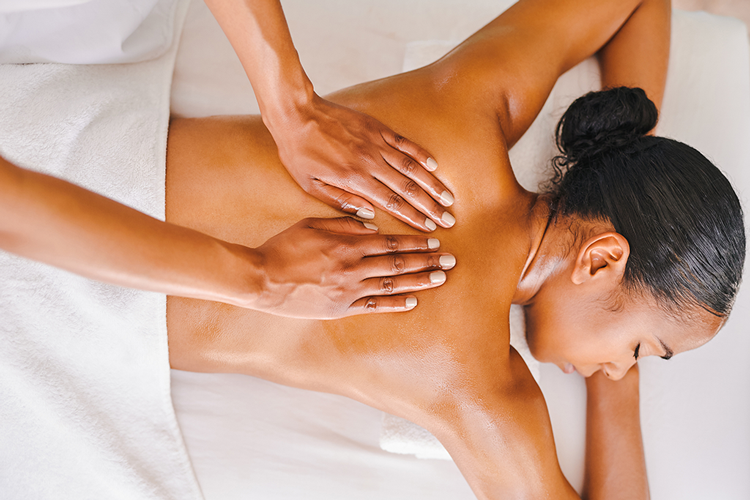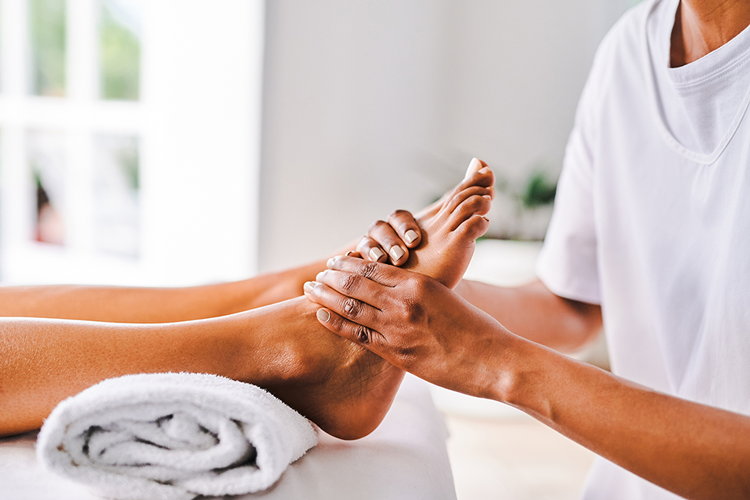Last updated November 2024
Visits from your in-laws. Aches and pains from arthritis or overdoing it at the gym. Politics. Reasons to stretch out on a massage therapist’s table are as numerous and varied as the bones in your spine. And massages boast well-documented health benefits, from easing migraines to treating stress and depression to reducing pain to speeding the healing process for some injuries.
Here’s advice and ratings to help you figure out what kind of treatment you want and find a good masseuse to do it.

Which Rubdown is Right for You
Massage has been around a long time: Images of therapeutic touch show up in ancient Egyptian art and antique Chinese scrolls. Today the act of someone laying their hands on your body for therapy or R&R comes in many forms. Here are the most prevalent techniques and what they’re best for. Be aware that the term “therapeutic massage” means the treatment focuses on a particular ache or pain, and doesn’t apply to any single technique.
Swedish
The best-known, most-performed type of massage is also one of the gentlest. Using long soft-to-medium strokes and oil or lotion, the therapist kneads, rolls, and taps muscles. It’s all meant to energize the bod and stimulate circulation. And, yes, it can be performed by non-Scandinavians. Best for: reducing stress, energy boosts, relief from anxiety.
Hot Stone
Adding hot stones to a Swedish massage can result in the sort of melty muscles and blissed-out state you get from a steamy bath or a hot yoga class. Besides giving you a traditional rubdown, the masseuse uses warmed-up, smooth river rocks to gently stroke your larger limbs, back, and shoulders. Sometimes the therapist also places a few stones strategically along your spine or on your belly to further loosen up muscles. Best for: reducing stress, releasing muscle soreness or tightness.
Deep Tissue
Shoulder frozen? Knee aching? This intense muscle- and fascia-attacking rubdown could provide sweet relief. But first you’ll be kneaded by a therapist who might use his or her knees, elbows, or their own body weight (eek, right?) to dig deeply into problem zones. Yep, you may feel sore the next day, but the ultimate effect should be pain relief. Sometimes deep tissue is used in conjunction with physical therapy. Best for: athletes, injuries, chronic pain, people who enjoy intense massage.
Thai
Lore says that a pal of the Buddha invented Thai massage in Asia more than 2,500 years ago. Nicknamed “passive yoga,” the technique is practiced on either a firm mat or the floor, not on a massage table. You’ll be fully clothed (usually in therapist-provided kung fu PJs) as the masseuse bends and twists your bod into yoga-like shapes and firmly massages joints and muscles. The overall effect ranges from energized (during) to blissed out (after, usually the next day). Best for: energy, stiffness, people who want to remain fully clothed.
Trigger Point and Myofascial Release
Both forms of massage use sustained pressure to treat body aches and pain. But—surprise!—that stinging in your neck might be caused by a trigger point in your back; and that ache in
your knee could be best addressed by massaging the fascial layers near it. With both therapies, pros use sustained pressure on tight muscles which are radiating discomfort to other sources in your body (aka “referral pain”). With myofascial release, the pressure tends to be gentler and paired with palpation of fascial layers in the direction of the affected area, say massaging the IT band for a knee issue. Best for: addressing specific aches and pains, tightness, chronic injuries.
Shiatsu
To perform this ancient Japanese technique, the therapist will merge gentle, rhythmic strokes with stretches utilizing their own body weight. In Eastern medicine, it’s all meant to restore vital body energy, or chi. Western translation: It’s a relaxing keep-your-clothes-on technique, with some evidence suggesting it can improve circulation and tamp down stress. Best for: stress, energy, relaxation, people who want to remain fully clothed.
How to Find a Massage Master
Most Americans drop into spas or massage therapists’ offices for rubdowns. But you’ll also find professionals operating in fitness centers, hotels, and offices of doctors, chiropractors, and acupuncturists. If you’re willing to go under the hands of a newbie, also consider massage-therapy schools.
Here at Checkbook.org, you’ll find ratings of massage therapists. You can also use apps like Soothe.com and Zeel.com to arrange for massages at home.
Getting a massage at home is convenient and usually not more expensive than at a therapist’s office. But consider whether you’re likely to get interrupted by family, pets, or other distractions.
If you care about it, ask if you can choose the gender of your therapist.
When shopping for a masseuse, check for certification by the National Certification Board for Therapeutic Massage and Bodywork, which requires that therapists complete 750 hours of training at an approved school, put in 250 hours of hands-on experience, pass an exam, and pass a criminal background check. It appears to be a well-conceived, well-managed program, but keep in mind that many great therapists don’t bother applying for and paying for certification.
Also check for licensure. All massage therapists in Illinois are required to have licenses.
To avoid shady massage parlors, look out for red flags. If it runs ads that market sensual massage, beautiful therapists, or include pics of scantily clad women or men, then it’s probably an illegal sex operation, not legit therapy. Also watch out for the phrase “full service,” which often is code for therapists who offer sex. If you pick a certified and licensed therapist, you shouldn’t end up in a compromising position. But if something untoward does happen, report it to the police.

Rub On, Rub Off: What to Expect
Arrive several minutes early for your first appointment, since you’ll often have to do paperwork. The therapist should take a medical history, ask why you’re seeking bodywork, and find out what you want to achieve. Be clear on how strong you like the pressure, or if you want them to focus on one area (hip, thighs) instead of your whole body. Still, don’t expect a masseuse to diagnose any medical conditions.
While it’s important to communicate your problems and expectations, don’t insist on a specific treatment. Many patients expect or want one kind of massage, only to learn it isn’t the best treatment for them. For instance, our editorial director recently went to a massage therapist for treatment for hip bursitis pain and asked for a deep-tissue session—only to learn such firm pressure might make the pain worse. She ended up getting a Thai massage instead.
Do you have to get naked to get a massage? Not always. You’ll be fully dressed for types like Thai and Shiatsu, and most of the other therapies can be performed through clothing. Still, know that good therapists can deftly use draping to shield your modesty, and that for many modalities (deep tissue, Swedish) being able to really knead or apply oil to bare skin produces the biggest benefits.
Is the pressure too hard? Not firm enough? Tell the therapist to adjust, and expect them to sometimes ask for feedback, too. Most pros are happy to chat during the massage and answer questions about what’s happening. But if you want quiet, tell Mr. or Ms. Magic Hands in advance, “I’m trying to bliss out, so I may not talk much.” Or just remain silent—most masseuses read that cue, too.
Nearly all massage therapists and spas charge by time, not by the type of treatment. Appointments generally last 60- to 90-minutes, though you can schedule shorter or longer blocs. Thirty-minute sessions, if available, are a good way to test out professionals.
For the same duration of sessions, some therapists charge far higher fees than others. You’ll find that—no surprise—fancy spas typically charge more than at-home providers or dedicated massage offices, but there are across-the-board big price differences so it pays to shop around. If you’re happy with your masseuse, ask whether you can get a discount by purchasing a series of massages. For a bargain back rub, massage-therapy schools often offer sessions with students at steeply reduced rates.
Insurance plans seldom cover massage. However, if it’s prescribed by a chiropractor, physician, or physical therapist, some plans do.


